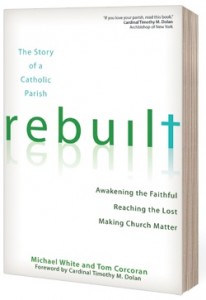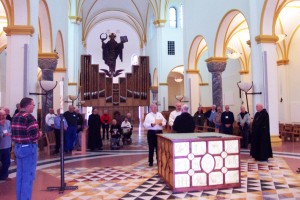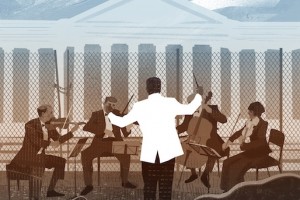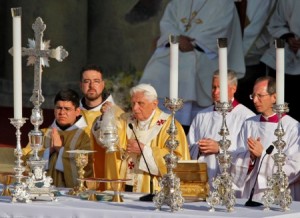 I’ve mentioned a recently published book, Rebuilt: Awakening the Faithful, Reaching the Lost, and Making Church Matter by Father Michael White and Tom Corcoran. I am in the process of digesting the content of the book. I find it helpful, realistic and spot-on in many ways. AND, I am persuaded by the indications of the authors based on their own parish experience and expectations. Obviously, you can read the book and see your parish, school, religious order/monastery in what White/Corcoran say. They don’t pretend to have all the answers and nor do they think that their method of rebuilding the parish is going to work everywhere. In fact, their method is not applicable in many Catholic institutions. What the authors offer is a possible (hopeful?) lens and a reasonable path forward in what the Lord means by the seeking the hundredfold. Their questions and concrete experiences are hard-hitting and I think are meant to make substantial change from consumer Catholics to disciples of the Lord. I think the honesty and keen observations of White and Corcoran will help to evaluate and to ask the right questions.
I’ve mentioned a recently published book, Rebuilt: Awakening the Faithful, Reaching the Lost, and Making Church Matter by Father Michael White and Tom Corcoran. I am in the process of digesting the content of the book. I find it helpful, realistic and spot-on in many ways. AND, I am persuaded by the indications of the authors based on their own parish experience and expectations. Obviously, you can read the book and see your parish, school, religious order/monastery in what White/Corcoran say. They don’t pretend to have all the answers and nor do they think that their method of rebuilding the parish is going to work everywhere. In fact, their method is not applicable in many Catholic institutions. What the authors offer is a possible (hopeful?) lens and a reasonable path forward in what the Lord means by the seeking the hundredfold. Their questions and concrete experiences are hard-hitting and I think are meant to make substantial change from consumer Catholics to disciples of the Lord. I think the honesty and keen observations of White and Corcoran will help to evaluate and to ask the right questions.
As Catholics we want to be students of the Lord, to be disciples (Matt 22 and Matt 28); we neither want Catholics to be consumers nor to passive in the journey of faith, of building up of the Kingdom and confessing the central fact of faith that Jesus Christ is Lord. In other words, we are meant to be mature, that is, adult Christians per Saint Paul the Apostle.
If we continue in a “Catholic” consumer mentality we as a Church will be become even more irrelevant than we already are in some places in the world, even in the USA. Does salvation matter? Does living as we are meant to live, that is, as a happy, healthy and mature Catholic man or woman? Does Church matter? Does my religious order or monastery matter?
It is clear that White and Corcoran are enamored by the Protestant mega-church experience. There is much to appreciate about these mega-churches on the levels of statists, programming and personal engagement. But it must be said that this approach is not going to be sufficient for Catholics if there is no correspondence with Catholic sacraments and sacramentality, lectio divina, solid catechetics for children, youth and adults and a cultures of service and study. For example, I would be suspicious of any Catholic renewal without Eucharistic and Marian devotions and no intellectual and spiritual formation. Hence, there has to be a vigorous liturgical observance. To do otherwise is a truly ecclesial contraception.
I recommend reading Rebuilt with the following texts as material for an examination of conscience of self, and for those involved in parish/religious ministries:
+ John Paul II, Christifidelis laici
+ George Weigel, Evangelical Catholicism
+ Pope Benedict XVI’s weekly catechetical addresses, the Year of Faith addresses, and his three encyclicals.
Sit before the Blessed Sacrament in prayer, examine your way of proceeding, AND listen to colleagues and with various constituencies. Focus on your concrete experience. The parish/religious order is not an island unto itself; a parish/religious order is really a vital collaborator with someone greater (God) and with others, Catholics and non-Catholics alike. To allow a parish to become irrelevant and later die because of inactivity is criminal and sinful. Ask the Holy Spirit.
To live your faith in a more mature way, then I would get a copy of Rebuilt.
More resources are found here given by the authors.
A radio review of the book can be found here.


